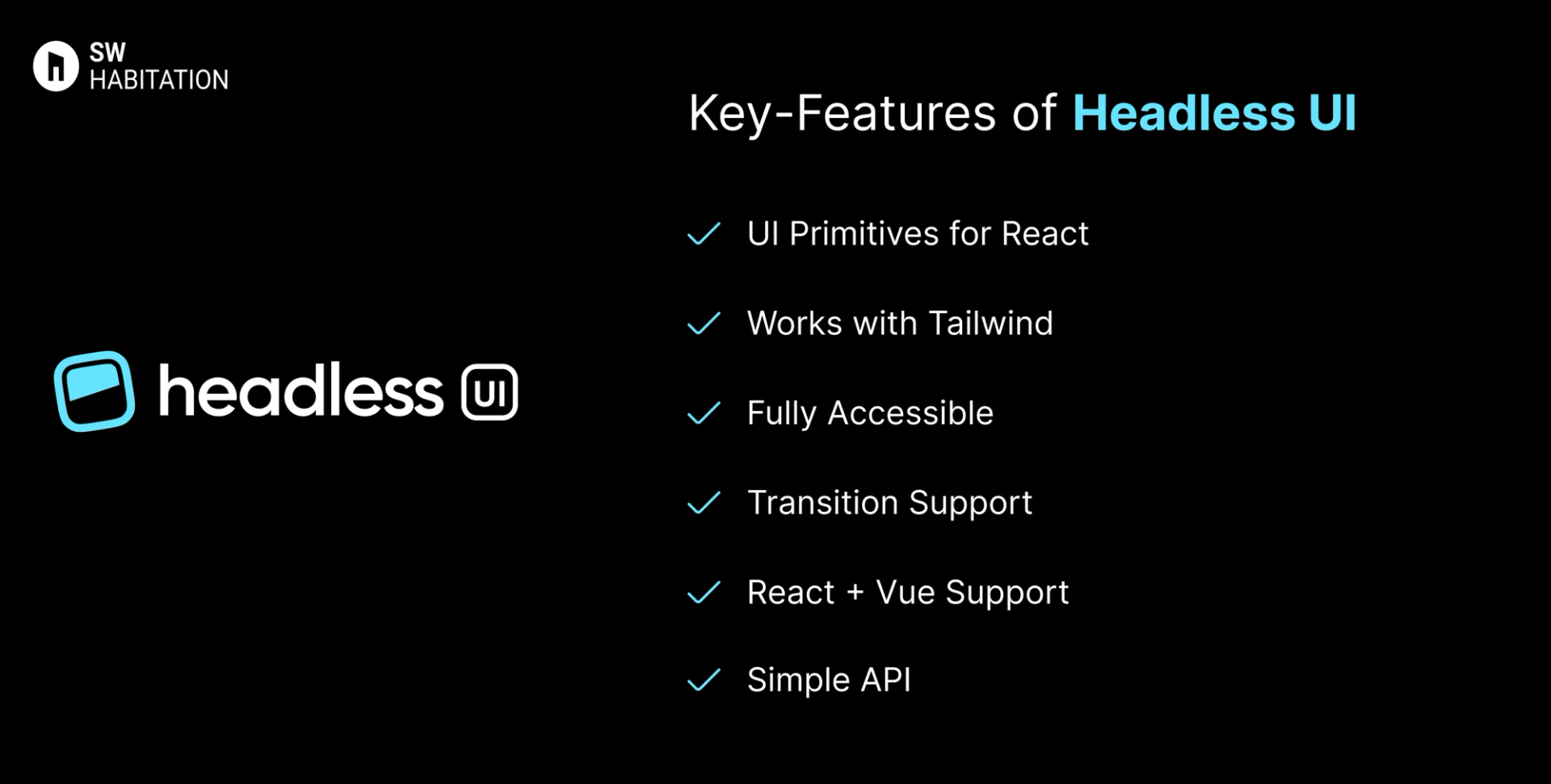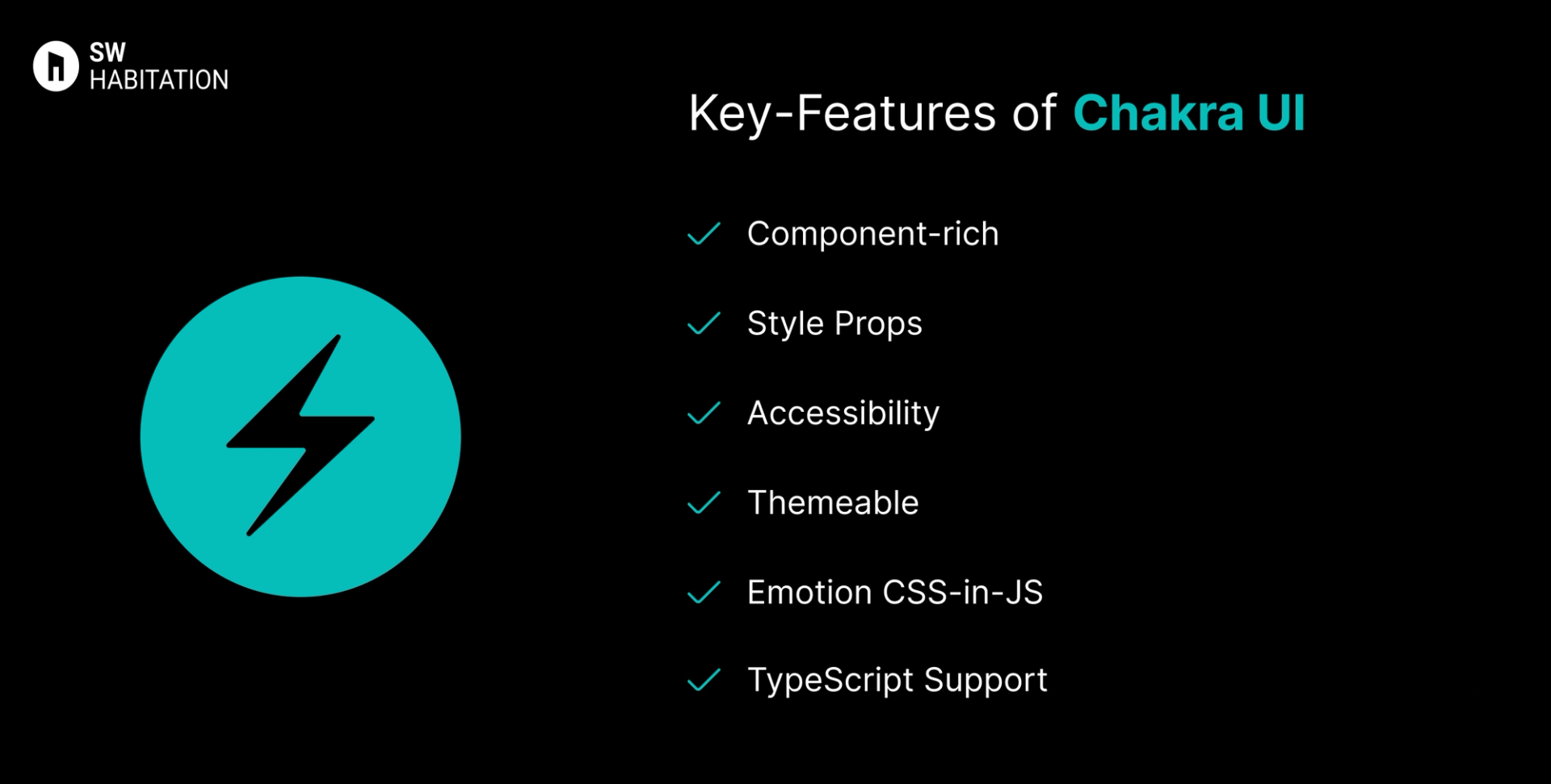Headless UI vs. Chakra UI

Headless UI

Chakra UI
You know how building a website can feel like a lot, especially when you’re trying to style every little thing yourself? Buttons, forms, layouts… it adds up fast. That’s where UI frameworks really save the day. They give you a bunch of premade design elements that you can just drop in and go. It’s like having a design starter pack that helps your site look clean and professional, without spending forever tweaking the details.
What is Headless UI?
Headless UI is an unstyled component library built by the creators of Tailwind CSS. It provides completely unstyled, accessible components for React and Vue.
It’s a perfect fit if you use Tailwind CSS and want flexible UI primitives without being locked into a pre-designed style.
Key Features of Headless UI


- UI Primitives for React: Includes Dialog, Menu, Listbox, Disclosure, Combobox, Tabs, etc.
- Works with Tailwind: Designed to be styled easily with Tailwind CSS.
- Fully Accessible: Handles keyboard interactions, focus states, ARIA roles.
- Transition Support: Built-in transitions using the <Transition> component.
- React + Vue Support: Available for both major frameworks.
- Simple API: Easy-to-use component structure for common UI patterns.
Advantages of Headless UI
- Easy to integrate with Tailwind CSS.
- Extremely lightweight and focused API.
- Comes with transition utilities for easy animations.
- Provides both React and Vue versions.
- Ideal for Tailwind-first projects needing flexibility.
Disadvantages of Headless UI
- Limited component set fewer primitives than others.
- Strongly tied to Tailwind ecosystem in examples and community.
- Transition component only supports basic animations not Framer Motion.
- Not suitable if you want full control outside Tailwind workflow.
- No TypeScript-first approach less complete typings than others.
What is Chakra UI ?
Chakra UI is a popular React component library that lets you build accessible, responsive UIs with ease. It provides a collection of components with built-in ARIA attributes, theme support, and responsive design via style props.
It’s ideal for devs who want plug-and-play components with built-in styling and dark mode.
Key Features of Chakra UI


- Component-rich: Inputs, modals, alerts, menus, tooltips, accordions, etc.
- Style Props: Apply margin, padding, color, size directly via props.
- Accessibility: ARIA-compliant components out of the box.
- Themeable: Custom themes, variants, dark mode support.
- Emotion CSS-in-JS: Built with Emotion for dynamic styling.
- TypeScript Support: Fully typed and developer-friendly.
Advantages of Chakra UI
- Easy to use with minimal setup.
- Style props eliminate the need for external CSS.
- Great documentation and community support.
- Built-in dark mode and responsive utilities.
- Clean and maintainable code structure.
Disadvantages of Chakra UI
- Limited design flexibility if you want pixel-perfect UI.
- Larger bundle size due to style props and runtime styling.
- Less control over raw DOM/styling.
- Not Tailwind-friendly out of the box.
- Can be verbose for deeply nested component trees.
Comparison Between Headless UI vs Chakra UI
Use Cases of Headless UI
- Projects using Tailwind CSS (especially with React/Vue)
- Lightweight React or Vue apps needing basic headless components
- MVPs or quick prototypes with Tailwind
- Simpler UIs where you don’t need deep customization
- Beginners or solo developers familiar with Tailwind CSS
Use Cases of Chakra UI
- MVPs, SaaS apps, portfolios that need speed + simplicity
- Devs who prefer using props for styling
- Teams focused on accessibility and fast prototyping
- Apps where the design doesn’t need to be pixel-perfect
- Projects using Emotion or CSS-in-JS ecosystem
Other Resources
Conclusion
UI frameworks make building a polished website way easier. Whether you're working on something simple or a big project, they help you get things looking just right without having to stress over every little design decision. With ready-to-use components, responsive layouts, and modern styles, you can build faster and smarter.
So, pick one that works for you, and start creating a site that looks amazing from the get-go.
Frequently asked questions
What is Headless UI used for?
It provides unstyled, accessible components like dialogs, lists, and menus — perfect for Tailwind-based UIs.
Does Headless UI support Vue?
Yes, it supports both React and Vue.
Is Headless UI styled by default?
No. It gives full control over design; you provide all styling (often with Tailwind CSS).
Does Headless UI handle accessibility?
Yes, it handles keyboard nav, focus traps, ARIA roles, and screen reader compatibility.
Can I animate Headless UI components?
Yes, using the built-in <Transition> component — though it's basic compared to animation libraries.
Is Chakra UI good for accessibility?
Yes! Chakra UI is designed with accessibility (a11y) in mind, following WAI-ARIA standards.
Does Chakra UI support dark mode?
Yes, it has built-in dark mode toggling using the ColorModeProvider.
What styling method does Chakra UI use?
Chakra uses Emotion (a CSS-in-JS library) and style props for inline styling.
Can I create custom themes in Chakra UI?
Definitely. Chakra has a powerful theming system that supports tokens, variants, and full overrides.
Is Chakra UI production-ready?
Yes. It’s widely used in SaaS apps and has a strong developer community.
